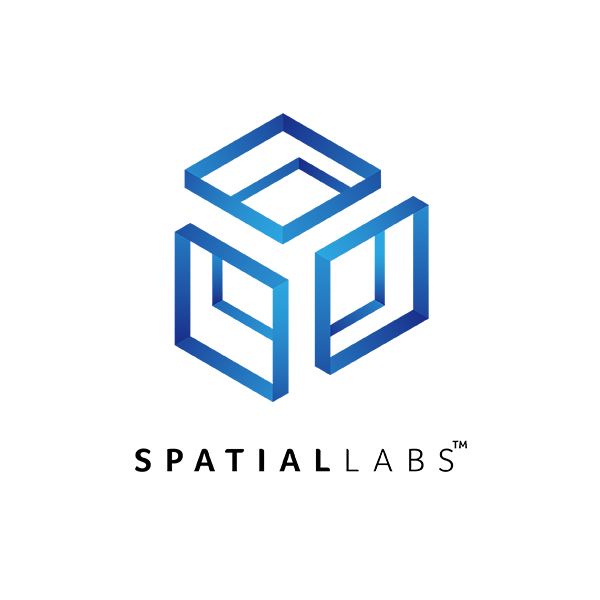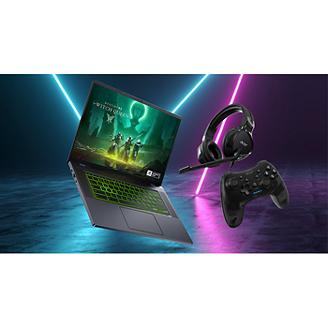-
Membrane vs Mechanical Keyboard
When choosing a keyboard, understanding the difference between mechanical and membrane keyboards is essential. This article clarifies these differences, outlining their pros and cons, and helps you decide which keyboard suits your needs. We'll also introduce a great series of mechanical keyboard options from Acer.
What is a membrane keyboard?
A membrane keyboard uses a flexible, pressure-sensitive layer beneath each key. When you press a key, it pushes down on a rubber dome or membrane sheet, closing an electrical circuit that registers the keystroke. This simple design makes membrane keyboards lightweight, affordable, and quiet. Often bundled with budget desktops or laptops, they rely on a flat, continuous membrane layer rather than individual moving parts for each key.
What is a mechanical keyboard?
Mechanical keyboards contain individual switches beneath each keycap. Each switch consists of a spring and metal contact that physically clicks together when pressed, sending a signal to your computer. These switches typically come in several distinct colors, each indicating a specific feel and sound:
* Blue (clicky, tactile)
* Red (smooth, linear)
* Brown (balanced, tactile but quieter)
* Black (linear, heavier press)
* Green (clicky, heavier press)
* Clear (tactile, heavier than Brown)
Because each key sits on its own mechanism, mechanical keyboards offer superior durability, responsiveness, and customization compared to membrane keyboards.
Build differences between membrane and mechanical keyboards
Membrane keyboards are constructed using a flexible rubber or silicone membrane that spans the entire keyboard layout. Each keypress pushes a dome-shaped section of the membrane downward, making contact with a circuit layer to register input. This method of construction results in a soft, cushioned key feel with minimal noise. Membrane keyboards are generally rated for approximately five million keystrokes, making them suitable for light to moderate use. Their sealed design limits dust and debris from entering the interior, which reduces maintenance requirements and improves resistance to minor spills.
Mechanical keyboards use individual mechanical switches beneath each keycap. These switches typically include a spring-loaded mechanism and a metal contact point that physically completes a circuit when actuated. This allows for distinct tactile feedback, faster response times, and a variety of switch types to accommodate different typing preferences. Mechanical switches are commonly rated between 50 and 100 million keystrokes, making them significantly more durable than membrane designs. However, the exposed switch housings are more susceptible to dust and debris, requiring more frequent cleaning. Mechanical keyboards also allow for extensive customization, including the replacement of keycaps, switches, and in some models, hot-swappable components.
Pros and cons of membrane vs mechanical keyboards
Membrane Keyboards
Pros
* Quiet operation: Key presses are softer and produce minimal noise, making membrane keyboards suitable for shared or noise-sensitive environments.
* Affordable pricing: Typically less expensive than mechanical models, membrane keyboards are a cost-effective choice for general use or large-scale deployments.
* Basic spill and dust resistance: The sealed membrane layer offers moderate protection against liquid spills and debris, which can help reduce the risk of short circuits or damage.
* Lightweight design: Membrane keyboards are usually thinner and lighter, making them easier to transport and more suitable for compact desk setups.
* Lower power consumption: Some membrane models consume less energy, which can extend battery life in wireless configurations.
Cons
* Limited tactile feedback: The rubber dome mechanism produces a soft, indistinct key feel that may reduce typing accuracy or responsiveness for some users.
* Shorter lifespan: Most membrane keyboards are rated for around 5 to 10 million keystrokes, significantly less than their mechanical counterparts.
* Minimal customization: Keycaps and switches are not easily replaceable, and the internal construction limits personalization or repair options.
* Inconsistent key response over time: Rubber domes degrade with use, which can lead to uneven key resistance and a less consistent typing experience.
Mechanical Keyboards
Pros
* Responsive tactile feedback: Mechanical switches offer clear actuation points and satisfying key travel, enhancing typing precision and comfort.
* Long-lasting construction: Many mechanical keyboards are rated for 50 to 100 million keystrokes, making them ideal for heavy typists or gamers.
* Extensive customization: Users can choose from a variety of switch types (linear, tactile, clicky), replace keycaps, and adjust features like RGB lighting and actuation force.
* Improved input accuracy: Most mechanical models support full N-key rollover and anti-ghosting, allowing simultaneous keystrokes to register correctly.
* Wide switch variety: Switch options such as Cherry MX, Gateron, and others allow users to tailor the typing experience to their preferences in sound, feel, and resistance.
Cons
* Higher cost: Mechanical keyboards are generally more expensive due to their complex switch design and higher-grade materials.
* Louder key presses: Depending on the switch type, especially clicky variants, mechanical keyboards can be noisy and distracting in quiet settings.
* Bulkier build: Mechanical keyboards tend to be heavier and larger, which may not suit users seeking portability or minimal desk setups.
* Ongoing maintenance: Regular cleaning may be required, and users interested in switch tuning or lubrication should expect additional upkeep.
Are mechanical keyboards better?
Mechanical keyboards are widely considered better because of their superior durability, enhanced typing accuracy, and satisfying tactile feedback. They improve typing speed, reduce fatigue during long sessions, and offer extensive customization options. However, whether mechanical keyboards are better for you depends on your priorities: comfort, cost, noise, and usage habits.
Which keyboard type suits you best?
* For Gaming: Mechanical keyboards are superior, offering faster response, durability, and customization, especially with red switches.
* For Typing and Productivity: Mechanical keyboards (especially blue or brown switches) provide excellent feedback, reducing fatigue and increasing accuracy.
* For Budget or Quiet Environments: Membrane keyboards are practical, quiet, and affordable.
Acer Atheon: A good mechanical keyboard recommendation
Looking for a reliable and premium mechanical keyboard? The Acer Atheon series is a superb choice. Designed with precision and comfort, the Acer Atheon is built for gamers and professionals alike.
Why Choose Acer Atheon?
* Durable Build: Robust, long-lasting construction ideal for heavy users.
* Customizable RGB Lighting: Personalize your keyboard to match your setup or mood.
* High-quality Mechanical Switches: Offers precise, satisfying keystrokes for improved productivity and gaming performance.
The Acer Atheon series exemplifies why mechanical keyboards are so highly regarded, combining aesthetic design, reliability, and exceptional typing comfort. Upgrade your typing experience today, buy now!
Conclusion
Knowing the difference between mechanical and membrane keyboards helps you choose a keyboard suited to your needs. While membrane keyboards offer affordability and quiet operation, mechanical keyboards provide exceptional durability, tactile satisfaction, and customization. Ultimately, mechanical keyboards like the Acer Atheon are a smart investment for those seeking improved productivity and a superior typing experience.
Recommended Products
Aethon 300
Buy Now
Aethon 330
Buy Now
Aethon 700
Buy Now
-
GPU Buying Guide: Key Graphics Card Specs You Need to Know
If you're building or upgrading a PC, picking the right graphics card can be one of the toughest, and most important, decisions. With constant releases, evolving GPU specs, and a wide range of performance tiers, it’s easy to get overwhelmed. This guide explains exactly what to look for when buying a GPU, from technical features to real-world benchmarks, so you can find the best graphics card for your needs.
What is a GPU?
A GPU, or Graphics Processing Unit, is a specialized chip designed to render visuals, accelerate computations, and handle high-performance graphics workloads. Whether you're gaming, editing 4K video, using AI tools, or just multitasking across multiple monitors, your GPU is what makes it all feel fast and fluid.
Unlike CPUs, which handle general-purpose tasks, GPUs are optimized for parallel processing, ideal for lighting effects, rendering geometry, and running neural networks. Today’s GPUs do much more than just draw pixels. With technologies like ray tracing, DLSS 4, and AI-assisted rendering, GPUs are now central to how modern PCs operate, both in games and creative apps.
1. GPU Model and Architecture
One of the first things to evaluate when choosing a graphics card is the GPU model and its underlying architecture. This determines not only raw performance, but also efficiency, feature support, and long-term compatibility with the latest software and games.
NVIDIA GeForce RTX 50 Series (Blackwell Architecture)
NVIDIA’s newest lineup is the RTX 50 Series, based on the Blackwell architecture. These GPUs include fourth-generation Ray Tracing Cores, fifth-generation Tensor Cores, and support for DLSS 4 with Multi-Frame Generation. They’re optimized for high-end ray tracing, AI-assisted rendering, and 4K gaming. Current models include:
* RTX 5090 – 32GB GDDR7, ultra-high-end flagship
* RTX 5080 – 16GB GDDR7, high-end 4K and creative performance
* RTX 5070 Ti – 16GB GDDR7, strong upper-midrange option
* RTX 5070 – 12GB GDDR7, ideal for 1440p gaming
* RTX 5060 Ti – 12GB GDDR7, budget-friendly 1080p+ performance
* RTX 5060 – 8GB GDDR7, entry-level gaming and AI acceleration
All cards support PCIe 5.0, DisplayPort 2.1, and include full support for DLSS 4 and neural rendering enhancements.
AMD Radeon RX 9000 Series (RDNA 4 Architecture)
AMD’s Radeon RX 9000 Series, built on the RDNA 4 architecture, focuses on delivering excellent mainstream performance with improved ray tracing and AI capabilities. These GPUs support FidelityFX Super Resolution 4 (FSR 4), AMD’s first machine-learning–accelerated upscaling technology, and come equipped with second-gen AI accelerators. Key models include:
* RX 9070 XT – 16GB GDDR6, 64 Compute Units, 128 AI Accelerators
* RX 9070 – 16GB GDDR6, 56 Compute Units, 112 AI Accelerators
* RX 9060 XT (16GB) – 16GB GDDR6, 32 Compute Units
* RX 9060 XT (8GB) – 8GB GDDR6, 32 Compute Units
The RX 9000 Series targets 1080p and 1440p gamers with competitive price-to-performance ratios, while also enabling AI-driven features and efficient power consumption.
If you're looking for the most powerful features available today, NVIDIA’s Blackwell cards lead in AI acceleration and ray tracing. If your focus is value, the RX 9000 Series offers excellent performance for the price, especially in the midrange segment.
2. VRAM (Video Memory)
VRAM, or Video RAM, is dedicated memory built into the graphics card that stores assets like textures, frame buffers, and rendering data. It plays a key role in determining how well your GPU handles modern games, high resolutions, and demanding creative applications.
For 1080p gaming, 8GB of VRAM is generally sufficient. However, as you move into 1440p or 4K gaming, or if you're working with video editing, 3D modeling, or AI tools, you’ll benefit from 12GB to 16GB or more. Many modern AAA games already exceed 10GB of VRAM usage at 4K with ultra settings, especially when ray tracing is enabled.
Current top-end cards reflect this shift. The NVIDIA RTX 5090 includes a massive 32GB of GDDR7, offering plenty of headroom for the most demanding use cases. Even lower-tier RTX 50 Series cards, like the 5070 and 5060 Ti, come with 12GB, ensuring smoother gameplay at higher resolutions.
On the AMD side, the RX 9070 XT and 9070 each come with 16GB of GDDR6, which is more than enough for 1440p gaming and even entry-level 4K performance. The RX 9060 XT is available in both 16GB and 8GB variants, offering flexibility for budget-conscious users.
It’s important to note that more VRAM doesn’t automatically mean better performance. It’s about balance. A high-end GPU with 16–32GB of VRAM is ideal for professionals and enthusiasts, while an 8–12GB card will satisfy most gamers without overpaying for unused capacity.
3. Clock Speed and Core Counts
Clock speed and core count are two of the most commonly misunderstood GPU specifications. While they both affect performance, their impact depends on how they interact with the overall architecture and design of the GPU.
Clock speed, measured in MHz or GHz, shows how fast the GPU cores operate. A higher clock speed allows more instructions to be processed each second. However, a faster clock does not always mean better real-world performance. This is especially true when comparing cards from different generations or brands. For example, an AMD card may have a higher frequency than a similar NVIDIA model but still perform worse due to architectural differences.
Core count refers to how many processing units are inside the GPU. NVIDIA uses CUDA cores, while AMD uses Compute Units and Stream Processors. More cores typically allow for better multitasking and higher parallel processing power. However, total performance also depends on how the architecture uses those cores.
Modern GPUs include specialized cores for ray tracing and AI tasks. NVIDIA cards have Tensor Cores and Ray Tracing Cores, while AMD cards use AI Accelerators and Ray Accelerators. These extra units are essential for features like DLSS and FSR.
In short, clock speed and core count should be viewed as part of a larger picture that includes architecture, memory, and thermal performance.
4. Ray Tracing and AI Features
Ray tracing is a rendering method that creates more realistic lighting and reflections by simulating how light behaves in the real world. It adds significant depth and realism to modern games but is also very demanding on hardware.
NVIDIA continues to lead in this area. The RTX 50 Series features fourth-generation Ray Tracing Cores and supports DLSS 4, which uses AI to upscale resolution and even generate new frames. DLSS 4 improves frame rates while maintaining high image quality through advanced machine learning.
AMD’s RDNA 4 architecture improves on previous generations with enhanced Ray Accelerators and introduces FidelityFX Super Resolution 4. FSR 4 is the first AMD upscaling technology to use dedicated AI hardware, making it a more direct competitor to DLSS.
Both DLSS and FSR aim to boost performance without sacrificing image quality. DLSS tends to deliver slightly better results, especially at 4K, due to its more mature ecosystem. However, FSR 4 is a strong and improving alternative, especially for those using AMD cards.
If you care about visual fidelity and smooth performance in demanding titles, support for ray tracing and AI features is worth prioritizing.
5. Bandwidth and Bus Interface (PCIe 4.0 vs PCIe 5.0)
Bandwidth refers to how much data a GPU can move between its memory and the rest of your system. Two key elements affect this: the speed and type of memory, and the bus interface used to connect the GPU to your motherboard.
Most modern graphics cards use either PCIe 4.0 or PCIe 5.0. PCIe 5.0 offers twice the bandwidth of PCIe 4.0. However, for gaming, this difference is not usually noticeable unless you are working with extremely high resolutions, large datasets, or multiple high-bandwidth components.
The RTX 50 Series and RX 9000 Series both support PCIe 5.0. This ensures better performance headroom for future workloads and improves compatibility with next-generation motherboards.
Memory type and bus width also matter. NVIDIA’s RTX 5090 uses GDDR7 with a wide bus, providing excellent memory throughput for 4K and beyond. AMD’s RX 9070 XT uses GDDR6 with a 256-bit bus, which is well suited for 1440p and moderate 4K gaming.
While PCIe version and memory bandwidth are not the most important specs for every buyer, they help ensure your GPU runs efficiently in both current and future use cases.
6. Power Requirements and Thermal Design Power (TDP)
Power and heat are two important considerations when buying a GPU. Thermal Design Power, or TDP, gives an estimate of how much heat a card generates and how much power it draws during typical workloads.
High-end cards like the RTX 5090 have a TDP of over 450 watts. These cards usually require at least an 850 or 1000 watt power supply, depending on the rest of your system. Midrange cards such as the RTX 5070 or RX 9060 XT are more efficient, typically drawing between 160 and 250 watts. These can operate safely with a 650 to 750 watt power supply.
You should also check power connector types. Many RTX 50 Series GPUs use the new 16-pin 12VHPWR connector, which requires compatible power supplies or included adapters. AMD’s RX 9000 Series generally sticks with the standard 8-pin connectors, making them easier to integrate into existing builds.
A high TDP means you will also need good cooling. Most GPUs come with dual or triple-fan coolers, and some include vapor chambers for better heat management. Be sure your PC case has adequate airflow and enough space to house the card.
Before buying a new GPU, verify that your power supply and case can support its power and cooling requirements.
7. Ports and Display Support
Before buying a GPU, it's important to check the types and number of display outputs it provides. Most modern graphics cards include a combination of HDMI and DisplayPort, but not all support the latest standards.
For high refresh rate monitors or resolutions above 4K, look for GPUs with HDMI 2.1 or DisplayPort 2.1. These standards support higher bandwidth, enabling smoother performance at 4K 144Hz or 8K resolution. NVIDIA's RTX 50 Series typically includes both DisplayPort 2.1 and HDMI 2.1. AMD’s RX 9000 Series supports DisplayPort 2.1a and HDMI 2.1 across most models as well.
If you're using multiple monitors, confirm that the GPU has enough outputs and that your desired resolutions and refresh rates are supported. Gamers often prefer DisplayPort because of its support for higher refresh rates and lower input latency.
8. Cooling and Fans
Thermal management is critical for maintaining performance and stability over time. A GPU that runs too hot can throttle its own performance or wear down faster due to sustained heat.
Most GPUs use either dual-fan or triple-fan cooling systems. Higher-end models like the RTX 5090 may include vapor chamber cooling and larger heatsinks to handle the increased thermal output. Some custom cards even offer liquid cooling options, which are quieter and more effective but come at a higher cost.
AMD and NVIDIA both offer reference coolers, but many consumers prefer third-party cards with enhanced cooling designs. Always check the physical size of the card and make sure your case has enough room and airflow to accommodate it.
9. Benchmarks
Benchmarks are one of the most reliable ways to judge real-world GPU performance. These tests evaluate how well a card handles actual games and tasks, providing data on frame rates, power draw, and temperatures.
Focus on benchmarks that match your intended use. For example, a card that performs well in 1080p might not handle 1440p or 4K as efficiently. Review sites such as TechPowerUp, Tom’s Hardware, and Hardware Unboxed provide extensive data and side-by-side comparisons to help you make informed choices.
Rather than relying on specs alone, always check how a GPU performs in your preferred settings and titles.
10. Value for Your Money
The best GPU is not always the most expensive. It’s the one that fits your specific needs and budget while delivering reliable performance.
If you're gaming at 1080p or 1440p, you may not need a top-tier card like the RTX 5090. Midrange options like the RTX 5070 Ti or RX 9070 XT offer excellent performance for a much lower price. NVIDIA tends to lead in premium features like ray tracing and AI upscaling, while AMD often offers better price-to-performance in the mainstream segment.
Always consider long-term support, driver stability, and feature updates in addition to raw specs. Balancing performance with price will help you get the most out of your investment.
Recommended Products
Nitro Radeon AMD RX7800 XT
Buy Now
BiFrost AMD Radeon RX7600
Buy Now
Nitro Intel® Arc™ B580
Buy Now
-
Why is My Computer Mouse Not Working? How to Fix a Broken Mouse
Like all hardware, a computer mouse can stop working at any time. A broken mouse can occur for various reasons, but it should be fixable as long as it hasn’t been splattered with coffee or rolled over with an office chair. This article gives handy tips on fixing a computer mouse not working properly, and when it might be time for a replacement.
How to troubleshoot a broken mouse
A faulty mouse can be frustrating, especially if it is required to avoid repetitive strain injuries or ensure comfort while working. But all may not be lost. If there are no signs of obvious damage, interference, or debris, try out some of these suggestions before running out and buying a new mouse.
1. Unplug and replug
A classic trick for faulty electronics, but sometimes, simple advice is the most effective. If a computer mouse suddenly stops working, start by unplugging and plugging it back in again. If that is unsuccessful, try a different USB port, as the underlying issue may be with the port and not the mouse.
2. Replace the battery (if wireless)
If the mouse is wireless, try swapping out the batteries for new ones and double-check that they are properly installed. This is particularly important if you haven't replaced the batteries since new. If the mouse is chargeable, plug it into the charging port before trying to reconnect it, as computer mice can sometimes stop working suddenly when battery levels are low.
3. Check Microsoft settings
If the buttons are not working as intended, you may have accidentally inverted your mouse clicks. This means that the scrolling direction or movement of the cursor has been changed or reversed. See the following instructions to rectify an inverted mouse via Microsoft settings:
* Open Microsoft settings
* Click Accessibility
* Select Mouse pointer and touch
* Choose Inverted pointer style.
4. Try updating drivers
If these steps have been unsuccessful so far, it’s now time to check the device drivers for updates. Check the manufacturer’s website and download them accordingly if available
5. Potential technical issues
The steps above should be enough to fix the most common mouse issues. If that doesn't work, a faulty mouse could be due to a mechanical or wiring issue, which are more technical to fix. In this case, it may be necessary to send the mouse to a professional for repairs.
Should I buy a new mouse?
A replacement mouse may be the most cost-effective option if it stops working because of mechanical or wiring issues. This is also the case if the cursor moves erratically when the mouse is not in use or if there is visible external damage. Here are some options from the Acer store.
1. For gaming
The Acer Predator Cestus range of mice has something for all gaming needs. For example, the Predator Cestus 350 is a wireless gaming mouse that ensures accuracy and comfort without annoying cables. It has eight programmable buttons and 16.8M RGB backlighting for effortless scrolling.
The Nitro Gaming Mouse III NMW200 offers a 6D Optical sensor with 6 game-optimizing DPI shifts (800-7200) and seven colorful lights for a more immersive gaming experience. Moreover, the AOPEN Gaming Mouse includes a Pixart 3325 IR Sensor and a 20 million click lifetime, making it a trusty gaming companion.
2. For everyday use
The Acer Vero AMR020 is a sleek wireless mouse made from 30% post-consumer recycled (PCR) plastic and works comfortably for right- and left-handed users. It is responsive and offers 1200 dpi resolution, making it ideal for everyday use.
With 1600 dpi resolution and comfortable shape, the Acer AMR100 wireless mouse lets users click and scroll with confidence. Its plug-and-play setup is easy to navigate and compatible with Chromebooks, PCs, and Macs.
Conclusion
A faulty mouse can be annoying, especially if you rely on it for wrist support or daily work. First, check the mouse for any visible damage or debris between the mouse and the work surface or desk. Then try the suggestions above or consider purchasing a new one if there is a mechanical fault.
Recommended Products
Predator Cestus 350
Buy Now
Vero AMR020
Buy Now
-
Best Upcoming AI Gaming Laptops from Acer
In gaming, performance is everything. From split second decisions to the responsiveness of your keyboard and mouse, every detail contributes to victory or defeat! Imagine if you could harness the power of AI and unleash it in your gaming exploits. Well, the good news is that you can, with an AI gaming laptop. In case you missed it, these are the new generation of laptops currently taking the gaming world by storm. If you’re new to AI laptops, or already searching for the best AI laptop, then you’re in the right place. Read on to discover the defining features of AI gaming laptops, then we’ll introduce four top notch upcoming Acer models.
What is an AI gaming laptop?
This is a pretty new breed of computer, so let’s briefly cover the essential features of AI gaming laptops before we check out the goods from Acer. AI gaming laptops are devices that combine high-end gaming specs with AI integrated features. Expect the latest CPUs, GPUs, as well as dedicated NPUs (neural processing units), and AI accelerators for real-time optimization. What this means is increased performance, responsiveness, and efficiency when it really matters.
Onboard AI processing uses machine learning to optimize graphics settings, fan speed, and power usage to massively enhance your gaming experience. As you’ll see from the PCs below, an AI gaming laptop is also the perfect choice for content creators, power users and streamers. Everyday productivity, multitasking, and even video calls benefit from AI integration. Finally, AI gaming laptops are ready to handle next-gen AI games and software, adding the undeniable benefit of futureproofing.
1. Predator Triton 14 AI
First in our lineup of upcoming portable AI infused gaming beasts is the Predator Triton 14 AI. The perfect solution for creative pros and gamers on the go, this 14-inch creativity and gaming powerhouse delivers AI-powered play and productivity. A Copilot+ PC that comes with an NVIDIA GeForce RTX 5070 GPU, the Triton 14 AI delivers a stunning 798 AI TOPS. AI to the core, this is a laptop that will help you smash the competition with (up to) Intel Core Ultra 9 CPU (48 AI TOPS).
The smallest of the laptops featured today, the Predator Triton 14 AI is equipped with a 14.5" OLED display with a WQXGA+ resolution of 2880 x 1800. Hardware-wise, the Triton 14 AI also packs (up to) 32 GB DDR5 RAM and (up to) 2 TB SSD. Slim and lightweight, the Predator Triton 14 AI can be effortlessly carried wherever you choose to go. Whatever you need to do, this laptop will help you do better.
2. Helios 18 AI
If you’re looking to go big, and possibly not go home, then the Predator Helios 18 AI is ready to join you on the journey. Aptly named after the Greek god of the sun, this 18-inch juggernaut is powered by an (up to) Intel Core Ultra 9 processor and a beastly NVIDIA® GeForce RTX™ 4090 GPU, for ultra-responsive gameplay and multitasking. For gaming, content creation, and streaming, the Helios 18 is the magic carpet ride you’ve been searching for.
Moving on to the massive 18-inch mini-LED display, you’ll be stunned by the peak brightness of 1000 nits and (up to) a 120Hz refresh rate, delivering silky smooth visuals and immersive play. Inside, you’ll discover (up to) 32 GB DDR5 RAM and (up to) 1 TB PCIe Gen 4 SSD storage, enough to help you plough through games as well as work. You might think that such a gargantuan device would struggle to stay cool? Not the Helios 18 AI with its 6th Gen AeroBlade 3D Fan technology that adapts at high speed to increase air flow. If you’re an elite gamer, creator or streamer, try out the Helios 18 AI and see if you can handle it.
3. Nitro V 16S AI AMD
Our next AI gaming powerhouse, the Nitro V 16S AI AMD delivers a serious dose of gaming power, performance, and mobility. Crafted for gamers and creators on the move, the Nitro V 16S AI AMD features (up to) an AMD Ryzen AI 9 365 processor (50 TOPS) and NVIDIA GeForce RTX 5070 GPU with 798 AI TOPS. Taking on device AI to the next level, the Nitro V 16S AI AMD amplifies with the power of DLSS 4, Reflex 2, and full ray tracing to keep you ahead of the game, whether you’re gaming, creating, streaming, or editing.
For full visual immersion, the16-inch WQXGA (2560 x 1600) display features a 180Hz refresh rate, 400-nit brightness, and 100% sRGB coverage. This device also excels at keeping cool on every occasion: dual fans and a quad-intake and exhaust cooling system handle the heat. The Nitro V 16S AI AMD packs the power, but remains slim (chassis under 19.9 mm thick). The 4-zone RGB keyboard, USB 4, Wi-Fi 6E, and AI-driven NitroSense controls all make the Nitro V 16S AI the wise choice for next-gen gaming and productivity in all places.
4. Helios Neo 16 AI
Last but not least in our adventure among the upcoming AI gaming laptops from Acer, meet the Helios Neo 16 AI. If you’re looking for a mid-size Intel powered AI gaming laptop, the Predator Helios Neo 16 AI cannot be beaten. Powered by (up to) an Intel Core Ultra 9 275HX processor with 24 cores and a max turbo frequency of 5.4GHz, the Helios Neo 16 AI can handle all of your gaming and multitasking requirements. Moving on to the GPU, (up to) an NVIDIA GeForce RTX 5070 Ti GPU with 140W MGP and 992 AI TOPS takes on-the-go visuals to a whole new level. This GPU incorporates features including DLSS 4, Reflex 2, Advanced Optimus, and full ray tracing powered by NVIDIA Blackwell architecture.
Blink and you’ll miss the beauty: visuals are delivered on (up to) a 16:10 OLED WQXGA (2560x1600) display with up to 240Hz refresh rate, 1ms response time, DCI-P3 100% color gamut, and NVIDIA G-SYNC. This laptop has AI integrated into every pore, Intel Application Optimization and the dedicated NPU enhance performance, reduce latency, and streamline background tasks, while Acer PurifiedView 2.0, PurifiedVoice 2.0, and ProCam support enhanced streaming and communication. For AI enhanced top-tier performance, seek out the Helios Neo 16 AI.
Get future-ready
We hope that you’ve enjoyed discovering the best upcoming AI gaming laptops from Acer. As you can see, these laptops balance state-of-the-art hardware and intelligent AI integration, for the ultimate gaming and creation experience. Whether you’re looking for an ultra-portable lightweight device like the Predator Triton 14 AI, or a juggernaut such as the Helios 18 AI, we’re sure there’s an Acer device to meet your needs. Check out these upcoming AI gaming laptops today, and future-proof your gaming and productivity!
Recommended Products
Orion 7000 (4080 GPU)
Buy Now
Orion 7000 (5080 GPU)
Buy Now
-
How to Remap Keyboard in Windows 11 Using Microsoft PowerToys
Want to remap a keyboard key in Windows 11? Whether you're fixing a broken button, tailoring a layout for gaming, or repurposing underused keys, learning how to reprogram your keyboard can boost comfort and productivity. This article explains why remapping your Windows keyboard is useful, how to do it using Microsoft tools, and how to reset everything to default settings.
Why remap your keyboard?
Most people stick with the default QWERTY layout, but there's no rule that says you have to. Here are a few common reasons why you might want to remap a keyboard key:
* Typing in other languages: Remap your keys to mimic AZERTY, Dvorak, or Colemak layouts for language-specific typing or ergonomic comfort.
* Gaming customization: Competitive and casual PC gamers often reprogram keys to create faster, more accessible input combinations.
* Productivity shortcuts: Assign frequently used functions (like Copy or Paste) to unused keys.
* Replacing broken keys: If a key stops working, you can assign its function to another key.
* Repurposing underused keys: Keys like Scroll Lock or Insert can be remapped to more useful commands.
Understanding how to remap a Windows keyboard gives you full control over your setup, whether you're optimizing for work or play.
How to remap keyboard keys in Windows 11
The best way to remap a keyboard key in Windows 11 is to use Microsoft PowerToys, a free utility developed by Microsoft.
Step-by-step: Using PowerToys Keyboard Manager
* Download PowerToys from GitHub or the Microsoft Store.
* Install and launch PowerToys.
* In the left sidebar, select Keyboard Manager.
* Toggle "Enable Keyboard Manager" to ON.
* Click "Remap a key" to open the key mapping tool.
* Click "+ Add" to create a new key mapping.
* Under "Key", press or select the key you want to change.
* Under "Mapped To", select the new function or key output.
* Click OK, then Apply to save your changes.
Example: You can remap Caps Lock to Ctrl for easier shortcut use.
PowerToys must stay running in the background for your remapped keys to work.
Alternative layouts and tools
If you're interested in switching away from QWERTY, try these popular layouts:
* AZERTY: Common in France; switches Q/W and M among others.
* Dvorak: Minimizes finger movement for ergonomic typing.
* Colemak: Blends Dvorak efficiency with QWERTY familiarity.
Other tools for key remapping include:
* SharpKeys: A simple interface that writes directly to the Windows Registry.
* AutoHotkey: Ideal for scripting complex macros and shortcut sequences.
* Microsoft Keyboard Layout Creator: Lets you build entire custom layouts (Windows 10 only).
How to reset keyboard mappings to default
If you want to undo your remaps, here’s how to reset to the original configuration.
In PowerToys:
* Open Keyboard Manager.
* In the Remap Keys panel, click the trash can icon next to each custom mapping.
* Or click Clear All to remove all remaps.
* Click Apply to confirm changes.
Uninstalling PowerToys will also revert your keyboard to its default behavior after a restart.
Frequently Asked Questions
Q: Can I remap keyboard shortcuts as well?
Yes. PowerToys also includes a separate section for remapping multi-key shortcuts (e.g., Ctrl+Alt+S).
Q: Does remapping affect all apps and games?
Yes. Once remapped, the key functions are system-wide, including in games, web browsers, and office software.
Q: Can I remap special function keys (like Volume or Brightness)?
Not all special keys are supported by PowerToys. Compatibility depends on your keyboard model and the support for its drivers.
Final thoughts
Learning how to remap keyboard keys in PowerToys Windows 11 opens up a new layer of customization for your PC. Whether you're looking to speed up your workflow, improve typing ergonomics, or just work around a hardware issue, remapping your keys is fast, reversible, and entirely free using Microsoft PowerToys. Try it out and take full control of your typing experience.
Recommended Products
Aspire Go 14
Buy Now
Swift X 14
Buy Now
Aspire Vero 16
Buy Now
-
6 Signs It’s Time to Upgrade Your PC (Before Windows 10 Support Ends)
There comes a time when every dog has its day. There also comes a time to replace your computer. Ask five people how often you should replace your computer, and you’re likely to get five different answers. Well today we’re cutting through the confusion around when to buy a new laptop. We’ll explain what Windows 10 EOS (End of Service) means and help you answer the burning question: when should I upgrade my computer? Read on to discover the truth about the upcoming Windows 10 EOS, as well as some warning signs that it is time to upgrade your computer.
What is an EOS?
If you missed our article covering the end of life for Windows 10, here’s a quick overview: After October 14, 2025, Microsoft will no longer provide official updates, security patches, and security support for the outdated version of the OS, namely Windows 10. So, from October 14, PCs still running Windows 10 will be subject to a range of risks, including security vulnerabilities, software compatibility issues, and loss of tech support. Knock on effects of these issues may include decreased productivity and performance, and compliance and regulatory risk for businesses, leading to potential legal consequences and fines. We’re not here for a Windows 10 vs Windows 11 discussion, but the takeaway is: upgrade or extend your security updates before the Windows 10 EOS.
Should I upgrade my PC?
Time is seldom kind to athletes, rock stars, or technology. But how do you know when it's time to upgrade your computer? Crank up your old computer and take note: there are several things to look out for that may mean it's time to bid farewell to your current device.
1. Boot-up and performance are painfully slow. No one likes waiting around for an old PC to warm up. If your computer takes longer than it once did to start up and launch apps, then this is a sign that your hardware is struggling to keep up with the demands of modern computing. If you’re using an older hard drive with a mechanical HDD, long startup times might make you consider upgrading to a device with SSD storage. An outdated CPU and limited RAM may lead to lags in daily computing, and your computer may struggle with basic multitasking and running mode programs. Sluggish computing is no fun, so you may want to upgrade for increased productivity and better user experience.
2. You're constantly running into compatibility issues. Technology is a swiftly evolving beast. Unsurprisingly, new games and software are designed to run on devices with high RAM specs and the latest GPUs and CPUs. System limitations mean that older PCs simply can’t support many new programs like productivity tools and creative software, leading to compatibility issues. This can lead to error after error, crashes, and the inability to install essential updates. Depending on what you use your computer for, if you can no longer install or run the programs you require, do yourself a favor and update before it's too late!
3. Missing key modern features. Regardless of whether you’re a tech enthusiast interested in following all the latest PC features, or someone who simply uses your computer as a tool to get work done, there are certain features that a PC in 2025 will struggle without. Lack of USB-C means slower data transfer and limited peripheral compatibility. Fast charging and Thunderbolt support won’t be possible, and you’ll also be unable to connect to new accessories, or use the latest networking tech. Without Wi-Fi 5 or Bluetooth 6, you’ll be dealing with weaker, slower wireless connections. An upgrade provides access to a world of speedy, versatile connections.
4. Overheating, loud noises, or poor battery life. If your PC is starting to sound like an old diesel engine, then it may be time to cool off with a new device. Fans constantly fanning can indicate thermal throttling, meaning that your CPUs clock speed is automatically reduced to stop heat damage. If your PC gets hot during basic tasks, then performance and lifespan are both suffering. And it’s not just heat you need to worry about; battery life matters too. Battery life on even the newest devices slowly decreases over time, but an old battery that can hardly run unplugged means it's time for a new laptop.
5. Hardware security vulnerabilities. If you’re unfamiliar with TPM 2.0 and Secure Boot, please check that your device is protected as it may be vulnerable to attack! Trusted Platform Module (TPM) is a hardware-based security feature that enhances your computer’s security, while Secure Boot prevents malicious software from loading when your PC starts up. Older devices may not receive firmware or critical driver updates, while BIOS updates and patching for known issues may also be neglected. These vulnerabilities may compromise your data, leading to all sorts of problems. Upgrade your PC and say hello to modern hardware that massively improves threat prevention through encryption and authentication.
6. Your PC can’t run Windows 11. That means once Windows 10 support ends, you’ll be stuck with an outdated system that no longer receives essential security updates or performance fixes. Windows 11 requires relatively recent CPUs, TPM 2.0, and Secure Boot security features. Without Windows 11, you’ll be unable to receive updates, performance optimizations, and of course, security improvements.
Time to upgrade?
We hope that today’s discussion has helped you decide if it's time to upgrade your PC. Whatever you use your computer for, whether it's gaming, work, studies, or entertainment, we strongly recommend you equip yourself with a PC that runs Windows 11 before the Windows 10 EOS in October. Oftentimes the signs we’ve covered start to appear all at once: a loud fan announces an overheating device that’s slow to startup and struggles with simple software.
When your beloved PC reaches that point in time, do yourself a favor and upgrade. You deserve it!
Head to the Acer Store page to check out all the latest, greatest PCs and find one that suits your individual requirements and budget.
Recommended Products
Aspire 14 AI
Buy Now
Aspire C24
Buy Now









